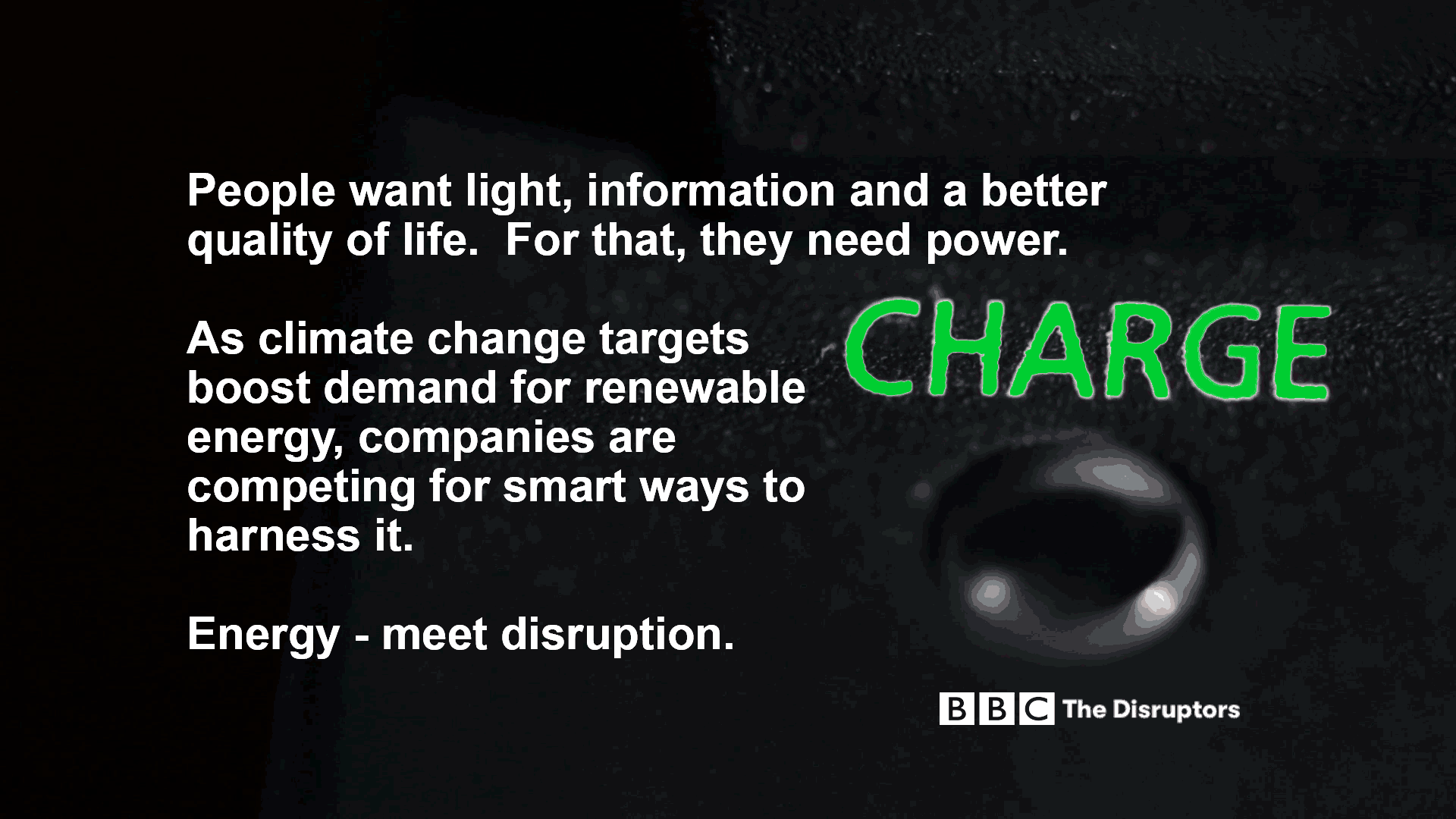
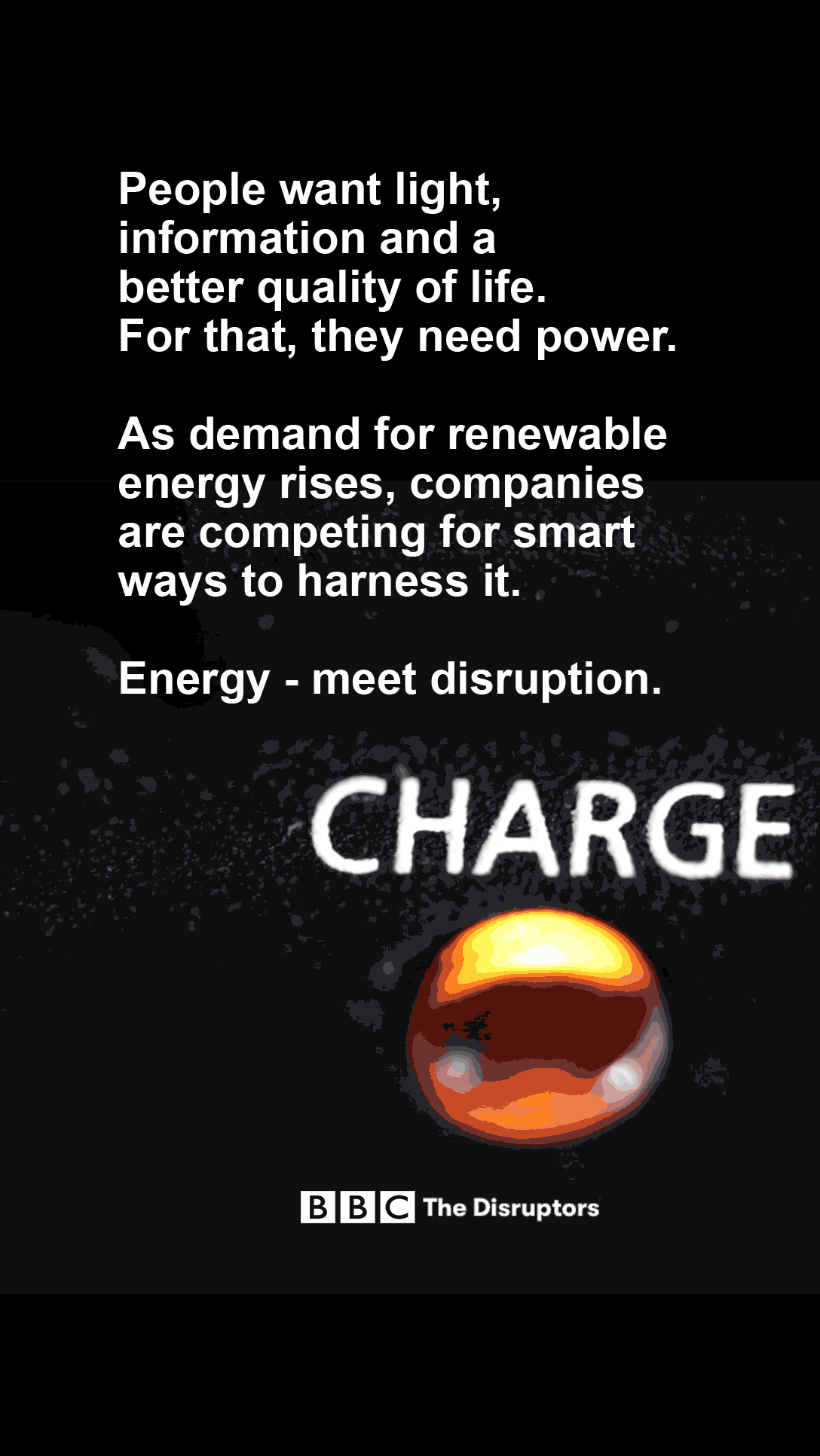
In many places in the developed world, it’s taken for granted that at the flick of a switch you can turn on a light, power your washing machine, or turn on your TV or computer.
And in most places in the developing world, people increasingly want power, and don’t want to be hostage to blackouts, if they are on a grid at all.
All power supplies are intermittent, to a greater or lesser extent. But by its nature renewable energy generation can give either too much or too little energy to satisfy demand at any one time.
That’s why the rise of renewables is also expected to lead to a boom in energy storage - because stored energy can be used to iron out those fluctuations in supply.
"I think the need for storage really begins when you understand how incredibly hard .. it is to make electricity", says Benjamin Sovacool, professor of energy policy at the University of Sussex.
"I mean it's essentially bottled lightning .. and it's incredibly complex. It's a unique product, supply has to match demand immediately."
Although around 176 countries globally now have a clean energy policy, the world still relies on oil, gas and coal – fossil fuels which UN climate scientists believe will have “severe, pervasive and irreversible impacts for people and ecosystems” if we continue to use them.
Prof John Goodenough, a scientific pioneer and an arch-disruptor, says humanity needs to fundamentally rethink how it produces and stores energy.
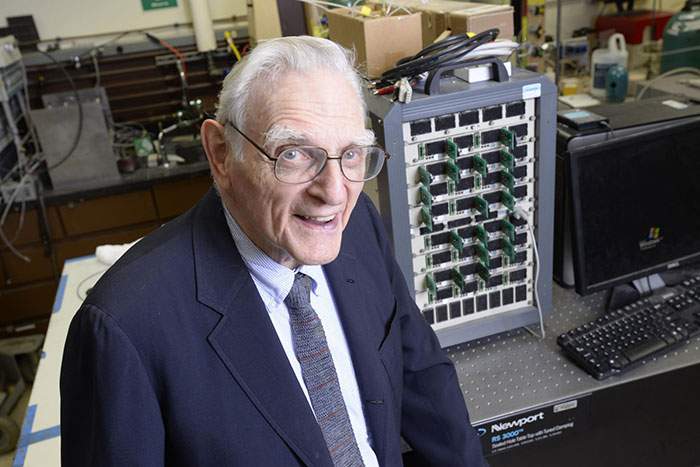
John Goodenough, the man behind the lithium-ion battery, in his lab in 2015
“Modern society runs on the energy that is stored in a fossil fuel, and that dependence is not sustainable. So we have to find a way in the very near future to be able to harvest energy from the sun, and to store it in batteries [on a large scale],” he says.
The 95-year-old academic, whose work in the late 1970s led to the invention of the lithium-ion battery, is still working on battery technology at the University of Texas at Austin.
I hope we can do better than photovoltaic cells, they’re still a bit expensive, but they’re coming along quite well, so we can harvest energy from the sun.”
“The problem is, after you convert it to electric power, you’ve got to store the power in order to be able to use it to supply a variable demand.”
And, as Prof Goodenough points out, large lithium-ion batteries have their drawbacks.
“People have to be very careful. If you make a large-scale battery, people have to monitor a lot of cells. For example, the Tesla car has 7,000 cells in it, all of which have to be managed, and he [Tesla boss Elon Musk] has done a good job managing it.”
Tesla has been investing in battery technology and production because of its electric cars, and has now moved on to large- scale storage in a place that has suffered from blackouts, recently activating the world's largest lithium-ion battery array at Hornsdale in South Australia.

Electric cars themselves can also be harnessed as energy stores. So-called “vehicle-to-grid”, or V2G, essentially uses electric vehicles as batteries on wheels.
Carmakers such as Nissan, BMW and Honda are exploring vehicle-to-grid projects with energy and software companies.
In Frederiksberg in Denmark, Nissan is collaborating with the local utility company, Frederiksberg Forsyning, software company Nuvve and Italian energy concern, Enel.

A parking lot for batteries
Frederiksberg Forsyning has replaced ten of its vehicles with Nissan all-electric vans and has installed ten special “bi-directional” charging points. Its engineers unhook their vehicles in the morning, go off to their jobs around the city and return the vehicles to the charging point in the afternoon.
After that the batteries are at the disposal of the grid.
Nuvve’s software, which was developed in the University of Delaware in the US, connects to the grid and constantly monitors its energy requirements. If there is a fluctuation in power it can call on the multiple batteries on its system, to smooth it out within seconds.
“We call this a virtual power plant” says Marc Trahand, chief operations officer for Nuvve in Europe. “All these small batteries put together...become one big power plant that you can then activate onto the grid."
But how do you ensure that the engineers don’t arrive at work to find the grid has “stolen” all the power in their batteries?
“Daily operation is the king,” says Kristian Beyer, Frederiksberg Forsyning’s head of staff and strategy. Employees are equipped with an app to enable them to control the energy levels in their cars, he says, and through trial and error the company has worked out how much charge needs to be left in the battery each morning.
The vehicles don’t only help when demand on the grid is high, but also when there is a surplus of supply in windy Denmark, says Mr Beyer:
“The more we can use or store the energy when it’s available, the better we can use our infrastructure, because sometimes we are wasting energy available to us and it would be a better option to store it and use instead of power plants and so on.”
Vehicle-to-grid schemes are designed to compensate drivers for lending their car to the grid.
But Dr Kotub Uddin, a vehicle-to-grid expert from the University of Warwick and now head of energy storage at OVO Energy, says that for vehicle-to-grid technology to take off commercially, people will have to be sure that their car batteries won’t be damaged.
Taking energy out of a battery and charging it repeatedly can cause the battery to degrade depending on factors such as the ambient temperature when the battery is charging, and how the car is used by the owner.
The answer to these problems is smart charging, he says.
In an intelligent system you have a way to do vehicle-to-grid that will minimise degradation and can actually extend the life of the battery."
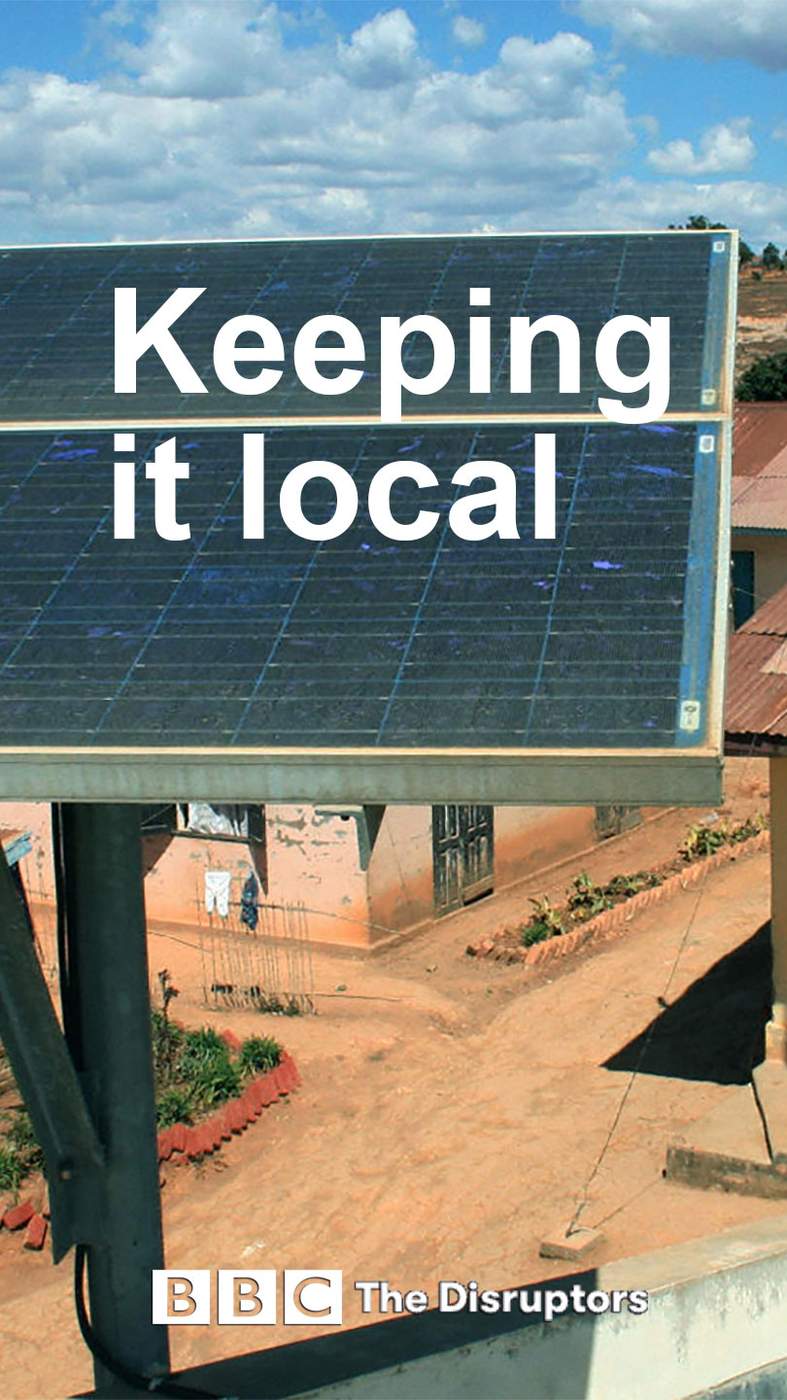
In the developing world, there are more than a billion people without access to electricity, according to experts.
And, says Koen Peters, executive director of the Global Off-Grid Lighting Association (Gogla), a further billion with an unreliable supply. He says these numbers mean there is a huge market for off-grid renewable energy, especially in places where it may not be economically viable to get hooked up to a grid.
“We’ve only scratched the surface of the available market,” he says.
This burgeoning interest in leapfrogging centralised energy distribution, and enabling local storage, is borne out by the figures. Since 2010, off-grid solar cumulative sales have grown by around 60%, according to Gogla.
Companies such as market leaders M-Kopa Solar, and Azuri, D.light and BBoxx, are tapping into this market and competing to sell solar panels, lights, and batteries to households in Central, East and West Africa and parts of Asia.
The companies install solar panels at households, and those are used to charge batteries during the day. Customers can then use the energy stored in the batteries for lighting at night, as well as to charge mobile phones.
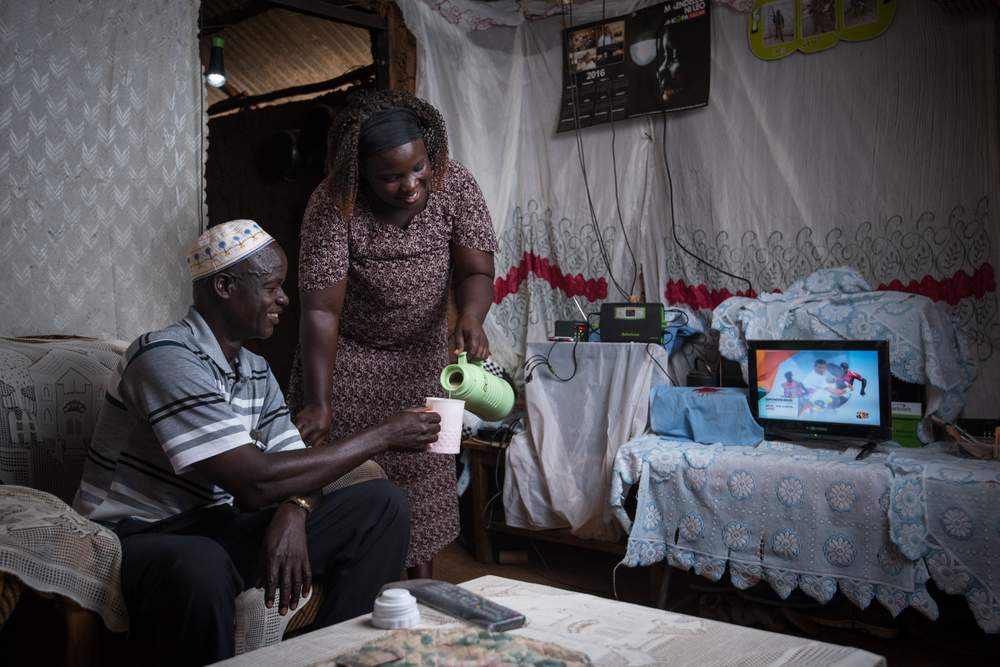
There are a number of other pieces of kit available such as pay-as-you-go satellite TV, or radios, as optional extras.
Monica Keza Katumwine, Bboxx’s Rwanda managing director, says her company can remotely monitor the performance of the system to see when people need more storage.
“Basically all our lives growing up, everyone gets electricity from the grid.... What we're changing today is having that power, but without the whole wires and poles and all of those things...it's providing the same service that the grid provides, but without the whole physical connection, it's all done remotely. So that's how disruptive it is.”
She says 95% of payments are taken through mobile money, through agreements with telecoms firms. People can pay monthly. Customers can also go to a bank to deposit payments.
In common with other firms in the sector, Bboxx provides financing, the upside of which is “obvious”, says Mr Peters. People can afford to get connected by spreading the payments.
However, the downside is that it is expensive for the firms providing the financing, and that cost is passed on to the customers.
“Offering financing is very expensive in developing countries,” Mr Peters says, leading to “a significant mark-up” on the products.
But the pros far outweigh the cons, Mr Peters says.
There’s an enormous impact on quality of life if you have access to these services.”
There has been increasing interest from investors in off-grid solar since 2014, Gogla says. However, access to capital is one of the greatest obstacles to expansion, says Monica Keza Katumwine of Bboxx.
“The solar technologies are still relatively new, and getting investors to invest into this business, that doesn’t have a lot of background information, like experience, [when] it’s been operating for over 30 years, or 100 years. We don’t have that, so getting people interested to invest into us is still a challenge,” she says.
BBoxx and companies like it are dealing with individual households, but one way of increasing the power and reliability of generation systems, which could be solar, hydropower, or biomass, is to hook them together into a mini-grid to serve a community.
Sarah Best, a mini-grid specialist with the International Institute for Environment and Development (IIED), says minigrids – which might be provided by a “huge diversity” of organisations can give a boost to local economies as they provide enough power for welding or carpentry equipment, encouraging entrepreneurship.
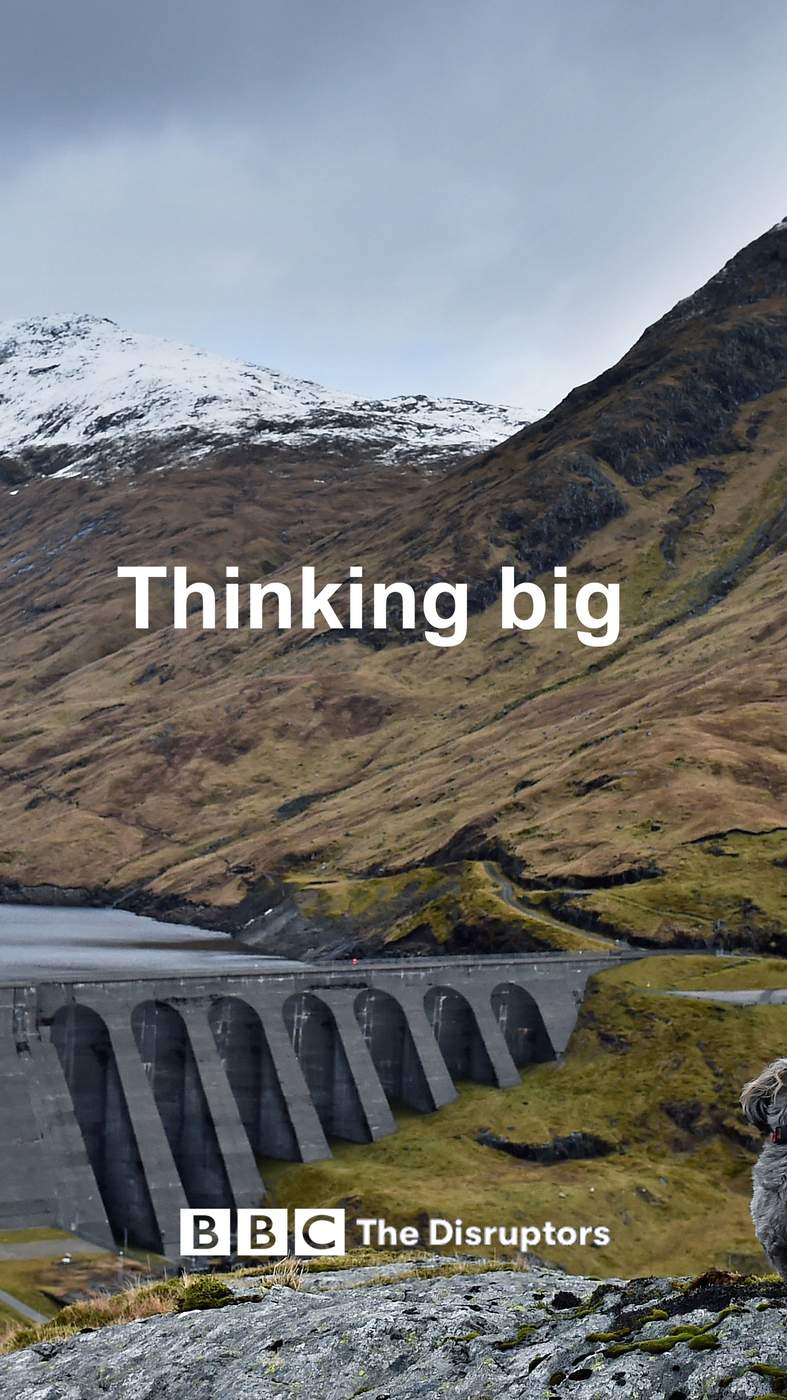
The world’s hunger for energy is only set to grow as the global population rises, with demand predicted to increase most in India, China and Africa to 2040.
The challenge is expanding the ability of renewables to cater for that growth in the number of people, especially in urban areas.
We can’t rely on fossil fuels – climate change regulations have increased twenty-fold in the past 20 years, culminating in the Paris agreement of 2015.
So what are the innovative ways to increase large-scale energy storage alongside the growth in renewables and the quest for efficiency?
Pumped hydro storage – where water is pumped up from a lower to a higher reservoir and released when needed to generate hydroelectric power - currently makes up about 96% of energy storage around the world. It could be described as a mature technology – it was first used at the end of the 19th century.
While this established type of storage is set to grow, its dominance is predicted to fall to around half of the global total by 2030, as other forms of energy storage catch up, the International Renewable Energy Agency (Irena) says.
Ravi Manghani, director of energy storage at Greentech Media thinks other storage ideas are worth exploring:
“Compressed air is an interesting technology,” he says. “It can be a form of bulk storage.”
One company that has investigated compressed cold air is Alacaes in Switzerland – it’s drilled a hole in the side of a mountain to store air that can be used to drive a turbine.
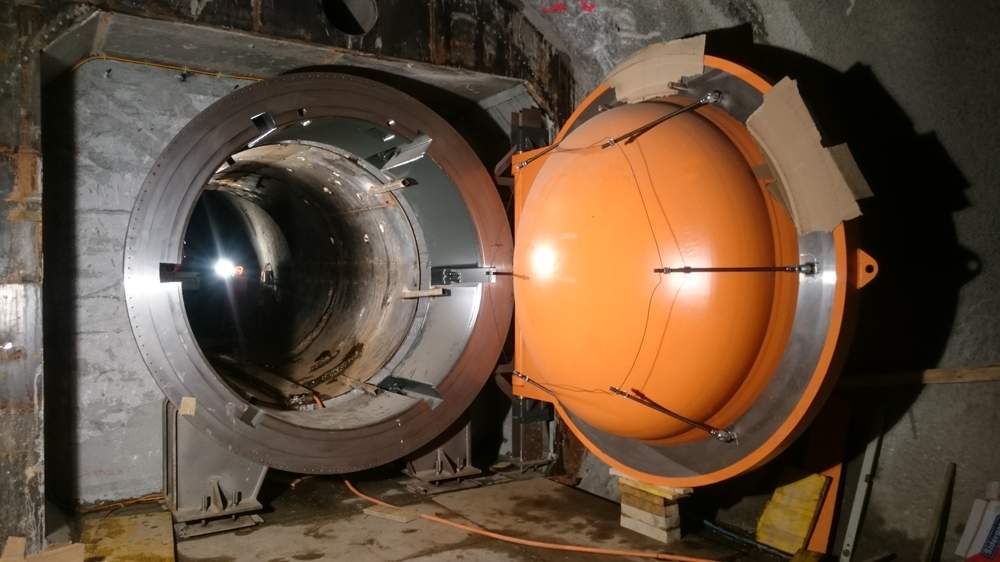
Alacaes caps its underground storage
“The downside is it has to rely on specific geological formations… It needs underground caverns which in itself is a limitation”, says Mr Manghani, of this technology.
Other technologies such as cold air storage will need to prove to the market they are “just as reliable” as more established technologies, he says.
But Highview Power Storage, founded in the UK in 2005, is convinced by the potential of cold air and is developing a different cold air technology that it says is a world first, and can be located "pretty much anywhere".
Using refrigeration, the company cools air until it is liquid at minus 196 degrees Celsius, and stores it at a low pressure.
Liquefaction is a tried and tested technology, but Highview has moved it on to a further level.
At the Pilsworth energy storage facility in Bury, near Manchester, the firm has built a demonstration plant that uses heat generated by burning waste gas from landfill, to re-expand liquid nitrogen (one of the main gases in the air around us). It’s then pushed through an expansion turbine which drives a generator and puts electricity back on to the grid.
The plant is due to be connected to the UK grid in the next couple of months.
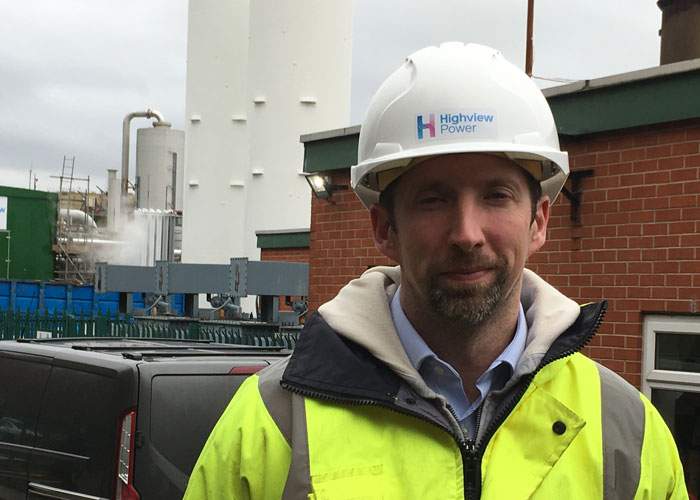
Stuart Nelmes, the firm’s engineering director, says the storage market is “still very much at a development stage.”
Globally the world is realising that true grid scale, long duration storage is a requirement if we’re to go for a decarbonised future, and this tech will play a key part in that."
Liquefying air means large chunks of energy can be stored over long periods of time. “Batteries still remain the go-to technology, everybody’s familiar with a battery, a smaller scale ..so that’s the real disruptor bit, that this is quite an odd technology and we need to displace more established, mainstream technologies within the marketplace", he says.
Not all experts are convinced by relatively unproven energy storage technologies.
Prof Sovacool says he thinks that liquid air energy storage (LAES) has some promise, but in general he is sceptical of technologies that are “technically feasible but still [have] a long way to go”.
He says that “for now - for the immediate future - which one can argue matters most for our Paris agreement targets and the health of the planet, the only economically or socially feasible large-scale storage systems would be pumped hydro, compressed air energy storage, and perhaps flywheels."
Whichever technology stays the course, the changing landscape has brought energy companies, car companies and data companies together.
And because there’s no one “silver bullet” technology, it’s clear that energy storage problems are going to be solved in lots of different ways – by individuals, start-ups, communities and cities - challenging the energy giants who have dominated the landscape up till now.




